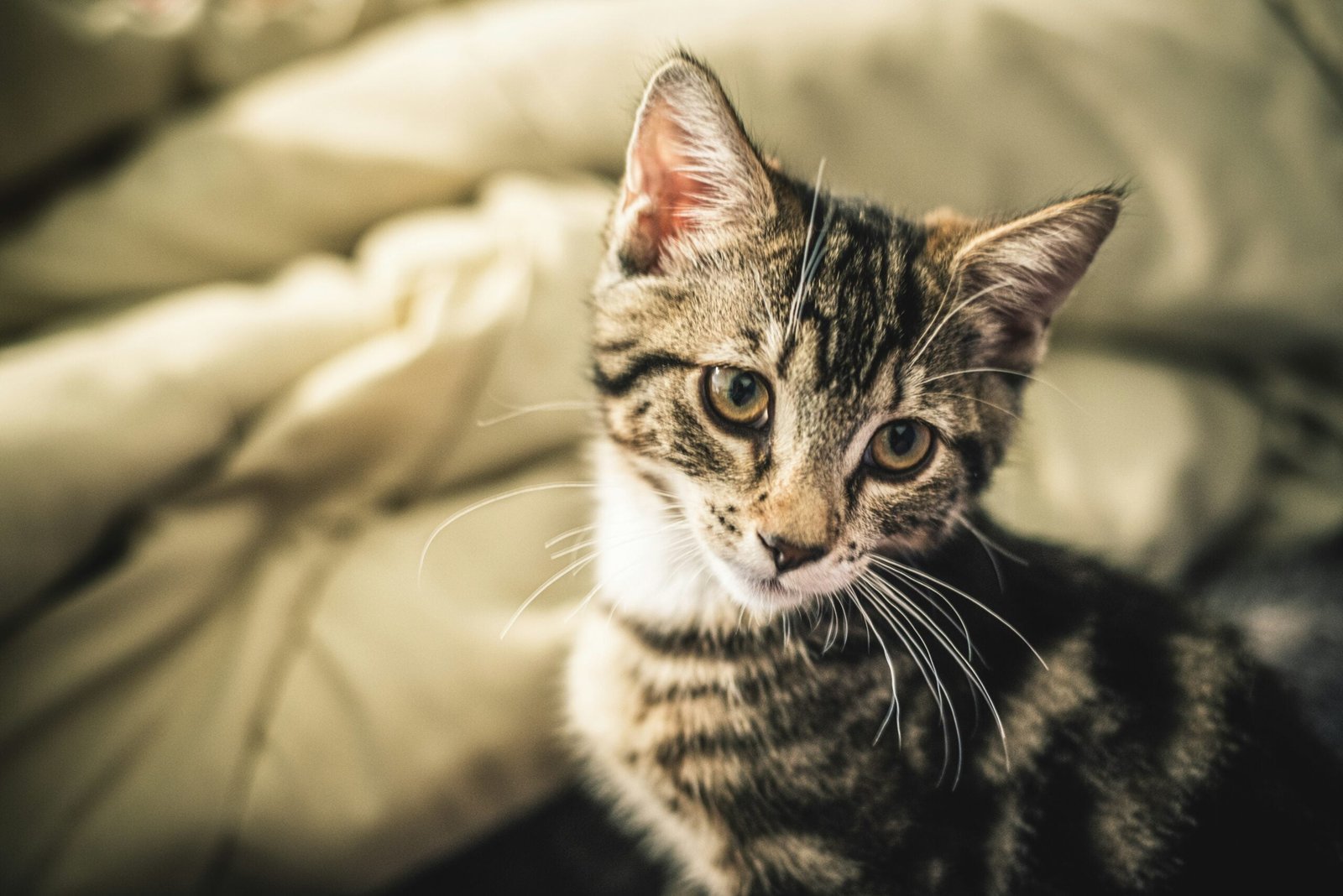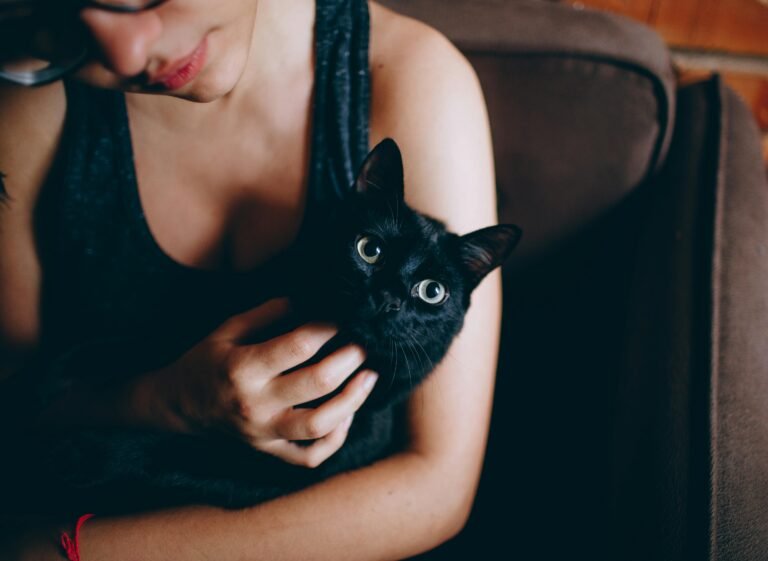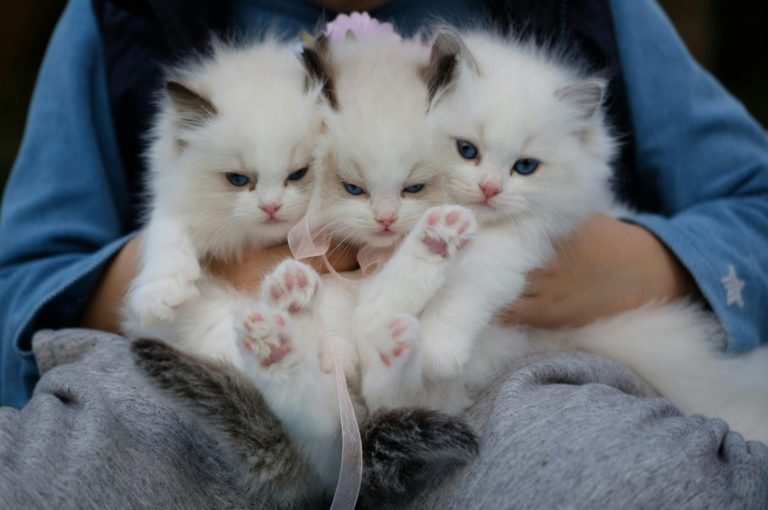
Cats are beloved companions that bring joy and companionship to millions of homes. However, like any living creature, they are susceptible to various health issues. Recognizing the signs of common cat illnesses is crucial for ensuring your furry friend lives a long and happy life. This guide will delve into the most common cat illnesses providing essential information on symptoms, prevention, and treatment.
By understanding common cat illnesses, you can become a more informed pet owner and take proactive steps to protect your cat’s well-being. Early detection is key when it comes to treating feline diseases, so it’s essential to be aware of the common symptoms and when to seek veterinary care. Let’s explore the world of cat health together and learn how to keep your feline friend thriving.
Common Cat Illnesses
Upper Respiratory Infections (URIs) in Cats
Upper respiratory infections, often referred to as cat colds, are one of the most common cat illnesses. These infections affect the nose, throat, and eyes, causing discomfort and potentially leading to more serious complications. Symptoms of a cat cold include sneezing, runny nose, congestion, eye discharge, and decreased appetite. While most URIs are caused by viruses, bacteria can sometimes contribute to the infection.
Prevention of cat colds involves maintaining a clean environment, practicing good hygiene, and ensuring your cat is up-to-date on vaccinations. While there’s no specific treatment for viral URIs, supportive care, such as providing plenty of fluids and a comfortable resting place, can help alleviate symptoms. In some cases, antibiotics may be necessary if a bacterial infection develops.
It’s important to consult with your veterinarian if your cat exhibits signs of a persistent or worsening upper respiratory infection. Early intervention can prevent complications and promote a speedy recovery from these common cat illnesses.
Feline Leukaemia Virus (FeLV): A Serious Cat Health Problem
Feline Leukaemia Virus (FeLV) is a contagious and potentially fatal disease that affects cats. It’s a significant concern for cat owners, especially those with multiple felines or outdoor cats. FeLV weakens a cat’s immune system, making them susceptible to various infections, cancers, and other life-threatening illnesses.
Symptoms of FeLV can vary widely depending on the stage of the disease. Some cats may show no signs at all, while others may exhibit symptoms such as weight loss, lethargy, fever, loss of appetite, oral ulcers, and persistent infections. Unfortunately, by the time obvious symptoms appear, the disease may have progressed significantly.
Preventing FeLV is crucial for protecting your cat’s health. Vaccinating your cat against FeLV is highly recommended, especially if they have outdoor access or interact with other cats. Additionally, keeping your cat indoors can significantly reduce their risk of exposure. If you have multiple cats, it’s essential to test them for FeLV and isolate infected cats to prevent the spread of the virus.
While there’s no cure for FeLV, supportive care can help manage symptoms and improve a cat’s quality of life. Regular veterinary check-ups, a balanced diet, and a stress-free environment are essential for cats living with FeLV. Early detection and proper care can make a significant difference in the outcome for affected cats.
Feline Immunodeficiency Virus (FIV): Impact on Cat Health
Feline Immunodeficiency Virus (FIV), often referred to as “cat AIDS,” is another serious cat illness that can significantly impact a cat’s health. Like FeLV, FIV weakens the immune system, making cats more susceptible to various infections. However, unlike FeLV, FIV is not transmitted through saliva but primarily through deep bite wounds from infected cats.
Symptoms of FIV can be subtle and may not appear for years after infection. Some cats may never show any signs of illness. When symptoms do occur, they can include persistent infections, weight loss, lethargy, oral problems, and enlarged lymph nodes. It’s important to note that these symptoms can also be caused by other health issues, so a veterinary diagnosis is essential.
Preventing FIV primarily involves keeping your cat indoors to reduce the risk of exposure to other cats. While there’s no vaccine for FIV, regular veterinary check-ups and early detection are crucial for managing the disease. With proper care, many FIV-positive cats can live long and relatively healthy lives.
It’s essential to remember that FIV is not transmissible to humans. However, it’s crucial to practice good hygiene when handling multiple cats to prevent the spread of the virus.
Urinary Tract Infections (UTIs) in Cats
Urinary tract infections (UTIs) are a common health problem in cats, causing significant discomfort and potential complications. While less frequent than in humans, UTIs can still occur and require prompt attention. Symptoms of a UTI in cats include frequent urination, straining to urinate, blood in the urine, accidents outside the litter box, and increased licking of the genital area.
Several factors can contribute to UTIs in cats, including bacterial infections, urinary crystals, and stress. Providing plenty of fresh water, encouraging regular litter box use, and maintaining a clean environment can help prevent UTIs. However, if you suspect your cat has a UTI, it’s crucial to schedule a veterinary examination. Your vet will conduct a urine test to confirm the diagnosis and prescribe appropriate treatment, which may include antibiotics or dietary changes.
Early detection and treatment are essential to prevent complications associated with UTIs, such as bladder stones or blockages. By being aware of the symptoms and taking proactive steps to maintain your cat’s urinary health, you can help prevent discomfort and protect their overall well-being.
Dental Disease: A Common Cat Illness
Dental disease is a prevalent health issue in cats, often going unnoticed until it becomes severe. It starts with the buildup of plaque, a sticky film of bacteria that forms on teeth. If left untreated, plaque hardens into tartar, which can lead to gum inflammation (gingivitis) and eventually periodontal disease. This condition can cause significant pain, tooth loss, and even systemic health problems.
Signs of dental disease in cats include bad breath, decreased appetite, drooling, pawing at the mouth, and visible tartar buildup. Some cats may also experience more subtle symptoms like difficulty chewing or changes in behavior. Regular dental care is essential for preventing dental disease and maintaining your cat’s overall health.
To prevent dental issues, it’s recommended to brush your cat’s teeth regularly with a cat-specific toothpaste. While this may take patience and practice, it can significantly reduce the risk of plaque buildup. Additionally, providing dental chews and offering dental treats can help support oral hygiene. Regular veterinary check-ups, including dental examinations, are crucial for early detection and treatment of dental problems.
If your cat is diagnosed with dental disease, your veterinarian may recommend professional dental cleaning under anesthesia. This procedure involves removing tartar and plaque, addressing gum disease, and extracting any severely damaged teeth. Post-operative care, including pain management and oral hygiene, is essential for a successful recovery.
By prioritising dental care, you can help your cat enjoy a healthier and more comfortable life.
Obesity in Cats: A Growing Concern
Obesity has become a significant health issue for cats, with far-reaching consequences for their overall well-being. An overweight cat is at increased risk for a variety of health problems, including diabetes, heart disease, liver disease, and joint pain. Recognizing the signs of obesity and taking steps to help your cat achieve a healthy weight is crucial.
Determining if your cat is overweight requires a visual assessment and body condition scoring by your veterinarian. If your cat appears rounder than normal, has visible fat deposits around the waist and neck, or lacks a noticeable waistline, it may be time to address weight management.
Preventing obesity involves a combination of diet and exercise. Providing a high-quality, low-calorie cat food formulated for weight management is essential. Regular feeding times and portion control are also vital. Encouraging playtime and interactive activities can help burn calories and keep your cat active.
If your cat is already overweight, gradual weight loss under veterinary guidance is recommended. Rapid weight loss can be harmful, so it’s important to follow a carefully planned diet and exercise program. Regular check-ups will monitor your cat’s progress and address any underlying health issues contributing to weight gain.
By prioritizing your cat’s weight management, you can significantly improve their quality of life and reduce their risk of developing obesity-related health problems.
Recognising Symptoms of Common Cat Illnesses
Understanding common cat illness symptoms is crucial for early detection and prompt veterinary care. While every cat is different, certain signs may indicate that something is amiss. Keep a close eye on your cat’s behavior and physical condition to identify potential health issues.
Common symptoms of cat illnesses include:
- Lethargy: A noticeable decrease in energy levels or activity.
- Loss of appetite: A decline in food intake or complete refusal to eat.
- Vomiting: Repeated episodes of vomiting can be a sign of various illnesses.
- Diarrhea: Loose or watery stools can indicate digestive upset or more serious conditions.
- Weight loss: Unintentional weight loss can be a symptom of underlying health problems.
- Changes in behavior: Unusual aggression, hiding, or excessive vocalization may signal illness.
- Difficulty urinating or defecating: Straining, crying, or accidents outside the litter box can indicate urinary or digestive issues.
- Changes in appetite or thirst: Increased or decreased water consumption can be a symptom of certain illnesses.
- Coughing or sneezing: These symptoms may indicate respiratory problems.
- Eye or ear discharge: Unusual discharge from the eyes or ears can be a sign of infection.
It’s important to remember that these common cat illnesses’ symptoms can be associated with various illnesses, and some may not indicate a serious problem. However, if you notice any changes in your cat’s behavior or physical condition, it’s essential to consult with your veterinarian for a proper diagnosis and treatment plan.
When to Seek Veterinary Care for Your Cat
Recognizing when to seek veterinary care for your cat is essential for their health and well-being. While some common cat illnesses’ symptoms may indicate minor ailments, others require immediate attention. Here are some guidelines to help you determine when to consult your veterinarian:
- Difficulty breathing
- Seizures
- Loss of consciousness
- Severe vomiting or diarrhea
- Blood in urine or stool
- Sudden lethargy or weakness
- Inability to urinate or defecate
- Persistent vomiting or diarrhea
- Loss of appetite for more than 24 hours
- Sudden weight loss
- Persistent coughing or sneezing
- Changes in behavior, such as aggression or hiding
- Pain or discomfort
- Persistent lameness
It’s important to trust your instincts as a pet owner. If you’re concerned about your cat’s health, don’t hesitate to contact your veterinarian. Early intervention can often prevent serious complications and improve your cat’s chances of a full recovery.
By being aware of common cat illness symptoms and knowing when to seek veterinary care, you can take proactive steps to protect your feline friend’s health.
Preventing Common Cat Illnesses
Vaccination: Essential for Cat Disease Prevention
- Vaccines are a cornerstone of preventive care for cats. They help protect your feline friend from a variety of serious diseases, including feline leukemia virus (FeLV), feline immunodeficiency virus (FIV), rabies, and upper respiratory infections. Vaccination schedules may vary depending on your cat’s lifestyle, age, and overall health. Consult your veterinarian to determine the appropriate vaccination plan for your cat.
Nutrition and Its Role in Preventing Cat Illnesses
- A balanced and nutritious diet is essential for maintaining your cat’s overall health. Providing high-quality cat food that meets their specific nutritional needs can help strengthen their immune system and reduce the risk of certain common cat illnesses. Avoid feeding your cat table scraps, as human food can upset their digestive system and contribute to obesity. Consult with your veterinarian to determine the best diet for your cat’s age, weight, common cat illnesses, and health conditions.
Regular Veterinary Checkups: A Cornerstone of Cat Care
- Regular veterinary checkups are crucial for maintaining your cat’s health and preventing common cat illnesses. These visits allow your veterinarian to perform physical examinations, administer vaccinations, and screen for common health problems. Early detection of any issues can lead to more effective treatment and improve your cat’s quality of life.
Protecting Your Cat from Parasites
- Parasites such as fleas, ticks, and intestinal worms can cause discomfort, illness, and even transmit diseases to your cat. Regular preventive measures, including flea and tick prevention products, as well as deworming medications, are essential for protecting your cat’s health. Consult your veterinarian to determine the appropriate parasite prevention plan for your cat’s lifestyle and environment.
Creating a Safe Environment for Your Cat
- A safe home environment is crucial for preventing injuries and reducing stress for your cat. Remove hazardous items such as toxic plants, cleaning chemicals, and sharp objects from your cat’s reach. Provide plenty of hiding places and scratching posts to encourage healthy behaviors. Consider the pros and cons of indoor versus outdoor living for your cat, as outdoor cats are at a higher risk of accidents, injuries, and exposure to diseases.
- By implementing these preventive measures, you can significantly reduce the risk of your cat developing common cat illnesses and improve their overall well-being. Remember, regular veterinary care and a proactive approach to your cat’s health are key to a long and happy life together.
Conclusion
Ensuring a Long and Healthy Life for Your Cat
Understanding common cat illnesses, recognizing symptoms, and implementing preventive measures are essential for ensuring your feline friend’s well-being. By being a proactive and informed pet owner, you can significantly improve your cat’s quality of life and longevity.
Remember, regular veterinary check-ups, a balanced diet, and a safe environment are crucial for maintaining your cat’s health. Building a strong bond with your veterinarian and seeking professional advice when needed will help you navigate any challenges that may arise due to common cat illnesses.
By taking the time to learn about common cat illnesses and implementing preventive care, you’re investing in a long-lasting and fulfilling relationship with your beloved companion.
FAQs about common cat illnesses
What are the most common cat illnesses?
Some of the most common cat illnesses include upper respiratory infections (URIs), feline leukaemia virus (FeLV), feline immunodeficiency virus (FIV), urinary tract infections (UTIs), dental disease, and obesity. While these are prevalent, it’s essential to remember that cats can develop a wide range of health issues, so regular veterinary check-ups are crucial.
How can I prevent my cat from getting sick from common cat illnesses?
Several preventive measures can help protect your cat from common cat illnesses. These include vaccinations, a balanced diet, regular veterinary check-ups, parasite prevention, and creating a safe home environment. Indoor cats are generally at a lower risk of exposure to common cat illnesses compared to outdoor cats.
What are the signs of a sick cat?
Common signs of a sick cat include lethargy, loss of appetite, vomiting, diarrhea, weight loss, changes in behaviour, difficulty urinating or defecating, and changes in appetite or thirst. If you notice any unusual symptoms, it’s essential to consult your veterinarian.
When should I take my cat to the vet?
If your cat exhibits emergency symptoms such as difficulty breathing, seizures, or loss of consciousness, seek immediate veterinary care. For less urgent concerns, schedule an appointment with your vet if your cat has persistent vomiting or diarrhea, loss of appetite, sudden weight loss, difficulty urinating or defecating, or any other common cat illnesses.
What is the best way to treat common cat illnesses?
The best way to treat common cat illnesses depends on the specific condition. Treatment options may include medications, dietary changes, supportive care, or surgical intervention. It’s essential to consult with your veterinarian for a proper diagnosis and treatment plan tailored to your cat’s needs.
Remember, this information is intended as a general guide and should not replace professional veterinary advice. Always consult with your veterinarian for any concerns about your cat’s health.






